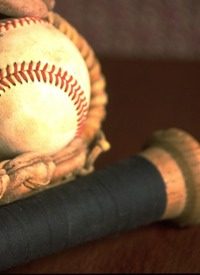
The baseball world has been abuzz the past few days over the allegation from anonymous sources that both Manny Ramirez and David Ortiz tested positive for performance-enhancing drugs in what was supposed to be a confidential testing back in 2003.
Earlier this year, there was a similar fuss when the Yankees’ Alex Rodriguez confirmed his own steroid use, discovered during that same round of tests. Given the nature and extent of the news coverage, the revelations might be considered on a par with, say, the discovery of those elusive weapons of mass destruction in Iraq. It has been that way since former Oakland Athletics slugger Jose Canseco came out several years ago with a book, called Juiced, that described his own adventures with anabolic steroids and was chock full of allegations about teammates and other players using the stuff as well.
That eventually led to hearings in Congress, with all of the ballyhoo and bluster that usually occurs whenever a committee of Congress proclaims its readiness to tackle yet another crisis. Surveying the press coverage, including more than a dozen TV cameras, at a hearing featuring Canseco and several other stars of the game, Rep. Bernie Sanders (I-Vt.) suggested wryly: "Maybe we’ll have to bring in some great baseball players to talk about crime and poverty." Given the success Washington has enjoyed in fighting crime and poverty, steroids may have a long shelf life in baseball.
No one was surprised about Ramirez, who was Ortiz’s Red Sox teammate at the time. Manny, now with the LA Dodgers, served a 50-game suspension this season for taking a fertility drug often used to conceal evidence of steroid use. But Ortiz, the outgoing, jovial giant, beloved by the fans and popular with the sportswriters, had spoken his mind on the subject earlier this year, saying publicly that players who get caught using performance-enhancing drugs should be suspended for an entire season. The latest news has taken some as a serious threat to his credibility. "If we can’t believe ‘Big Papi,’" said one radio talk-show host, invoking the slugger’s popular nickname, "who can we believe?"
Unlike the later random tests with suspensions and/or fines, the ’03 tests were conducted throughout major league baseball to determine the extent of the problem. There was no penalty at the time for testing positive, and the results were to remain anonymous. The records were supposed to have been destroyed, but somehow wound up in the hands of federal agents investigating the distribution of the banned drugs to professional athletes. The list, reportedly containing the names of 104 players who tested positive, is now the subject of a lawsuit brought by the players union and the government.
Aside from whatever long-term harmful effects steroids may have on the body, concern about its use tends to center around two factors. One is that use of the drug by sports celebrities will likely increase usage among youngsters who idolize and imitate their favorite athletes. But steroid use is already said to be widespread among young athletes seeking to excel and make a name for themselves in the highly competitive environments of high school and college sports. And, ironically, it is the anti-steroids campaign that has focused the attention of young athletes and everyone else on which of the professional sports heroes are believed to be using the stuff.
The other concern is that the chemically enhanced achievements of recent and current players unfairly diminish the records set by those of previous eras, who, presumably, reached their heights of glory using only the strength that God and nature gave them. But there is a long history of players putting substances, legal and otherwise, into their bodies to gain or maintain a competitive edge. Zef Chafets, author of Cooperstown Confidential, cites a few examples:
In 1961, during his homerun race with Roger Maris, Mickey Mantle developed a sudden abscess that kept him on the bench. It came from an infected needle used by Max Jacobson, a quack who injected Mantle with a home-brew containing steroids and speed. In his autobiography, Hank Aaron admitted once taking an amphetamine tablet during a game. The Pirates’ John Milner testified at [a] drug dealer’s trial that his teammate, Willie Mays, kept ‘red juice,’ a liquid form of speed, in his locker. (Mays denied it.) After he retired, Sandy Koufax admitted he was often ‘half high" on the mound from the drugs he took for his ailing left arm.
Babe Ruth, according to legend, tried to increase his extraordinary power with injections of an extract from goats’ testes — though whether the performance Ruth was trying to enhance was on the baseball diamond or in more private settings is uncertain. The story itself may well be apocryphal, but no one doubts that the great Bambino "injected" himself with vast amounts of beer during Prohibition, when alcohol was an illegal substance. Alcohol is not normally considered "performance enhancing," but in Ruth’s case, it may have been. Bill Veeck, former owner of the Saint Louis Browns and Chicago White Sox, said Grover Cleveland Alexander was a better pitcher drunk than sober. New York Giants manager Leo Durocher tried to get part-time outfielder Dusty Rhodes kicked off the team for his excessive drinking. But Rhodes had so many game-winning hits that year that Durocher was buying him drinks before the season was over.
But cheating in baseball often has less to do with what the players put in themselves than what they put in the bats and on the ball. Bats with the barrels hollowed out and stuffed with cork help hitters swing faster and drive the ball farther. The "corked" bats are illegal, but players have been caught using them anyway, and have been fined and ejected from games. Pitchers have been known to apply everything from saliva to Vaseline to sandpaper to the baseball to give their pitches added motion. Though the spitball has been outlawed since the early days of the 20th century, some pitchers have enjoyed enormous success with it. Gaylord Perry, a member of baseball’s Hall of Fame, was still throwing the pitch and getting away with it when he published his autobiographical Me and the Spitter in 1974. Dizzy Dean, on the other hand, artfully denied that he had ever applied any "foreign substance" to the ball. "Anything I put on the ball is made right here in the good ol’ US of A," he insisted.
There is, indeed, a long history of cheating in baseball, as in most other human endeavors, however shocking that may be to the men and women in Congress. Perhaps we should insist on drug testing of senators and representative to determine if they have been on steroids when passing appropriations bills or enacting new regulations. In the meantime, they should leave the policing of player conduct up to Major League Baseball — and leave those issues of crime and poverty with state and local governments where they belong.



